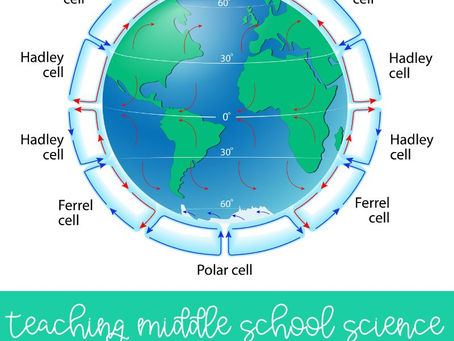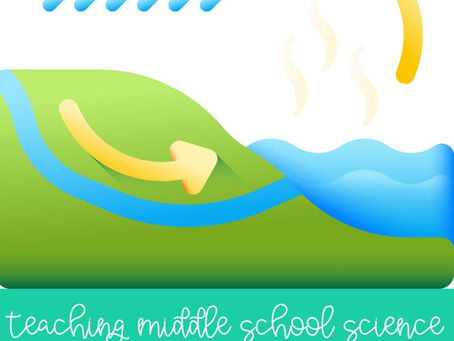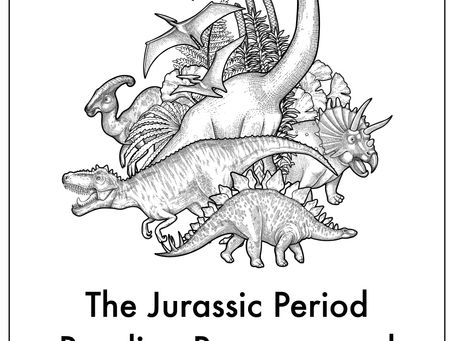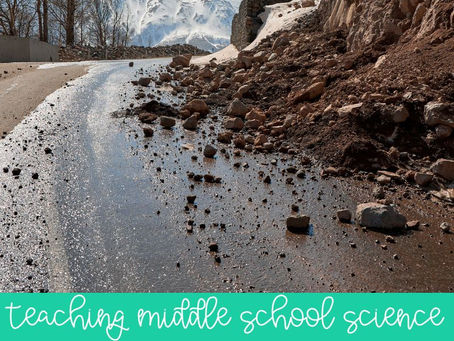top of page
The Productive Teacher
I use the latest in brain science research to create lessons that are engaging for students and easy for teachers.
There are tons of activities, presentations, and reading passages to help teach (and learn) a variety of topics! Click the topics to learn more!
Search


The Rock Cycle for Middle School Science
The rock cycle describes how rocks change on Earth. Rock can transition between sedimentary, igneous, and metamorphic rock as it moves...
3 min read


Metamorphic Rocks for Middle School Science
Metamorphic rocks are formed when existing rocks are changed by heat, pressure, or both deep inside the Earth. This process does not melt...
2 min read


Sedimentary Rocks for Middle School Science
Sedimentary rocks are made when small pieces of rock, sand, and other materials build up in layers over time. Water, wind, or ice carry...
3 min read


The Nitrogen Cycle for Middle School Science
The Nitrogen Cycle describes how nitrogen moves through the environment. Like carbon, nitrogen exists both in the atmosphere and on the...
3 min read


The Phosphorus Cycle for Middle School Science
The Phosphorus Cycle describes how phosphorus moves through the environment. Unlike carbon and nitrogen, phosphorus doesn't exist as a...
2 min read


The Carbon Cycle for Middle School Science
The Carbon Cycle describes how carbon moves through the environment. Carbon exists as a gas in the atmosphere and as a solid as a part of...
4 min read


Tornadoes for Middle School Science
Tornadoes are one type of extreme weather. They happen when cold air gets on top of warm air. The falling cold air and the rising warm...
4 min read


Hurricanes for Middle School Science
Hurricanes are one type of extreme weather. They are an example of what happens when the water cycle goes into overdrive because of...
4 min read


The Atmosphere for Middle School Science
The atmosphere is a big topic. The atmosphere is the layers of gases that surround the Earth. It is where all of our weather happens. It...
2 min read


All About Weather for Middle School Science
Clouds are an important part of the water cycle. Clouds are how liquid water moves through the atmosphere. This blog post will teach you...
4 min read


All About Clouds for Middle School Science
Clouds are an important part of the water cycle. Clouds are how liquid water moves through the atmosphere. This blog post will teach you...
3 min read


Global Atmospheric Circulation for Middle School Science
Global atmospheric circulation is the way that the air molecules of the atmosphere move around the Earth due to the uneven heating of the...
4 min read


The Water Cycle for Middle School Science
The water cycle is a topic that kids learn about throughout elementary and middle school. The basic ideas stay the same, but the...
3 min read


A Brief Overview of the Jurassic Period for Middle School Science Classes
Earth history is a fascinating topic! It is also a massive topic! The reading passage below will teach you all about the Jurassic Period....
3 min read


Building Background Knowledge: Sally Ride
Why learn about Sally Ride? New science TEKS are coming to Texas! One change is that students will learn about specific scientists in...
2 min read


What is the Difference Between the Asthenosphere and the Lithosphere?
The lithosphere and asthenosphere are both mechanical layers of the Earth. The layers of the Earth can be organized by composition (what...
5 min read


What are Landslides?
Landslides change the surface of the Earth. They happen when rocks, soil, and anything else on the ground falls down a slope after...
2 min read


Learning About How Volcanoes Form
Volcanoes are mountains formed around vents or fissures in the Earth’s crust that release lava, ash, rock, and gases. When volcanoes...
4 min read


Learning About Pangaea the Supercontinent
Designua /Shutterstock.com For most of human history, people believed that the continents didn’t move. However, as technology improved,...
3 min read


How did Scientists Discover Seafloor Spreading?
Seafloor spreading happens at divergent plate boundaries under the ocean. As hot rocks rise in convection currents within the...
3 min read
bottom of page
